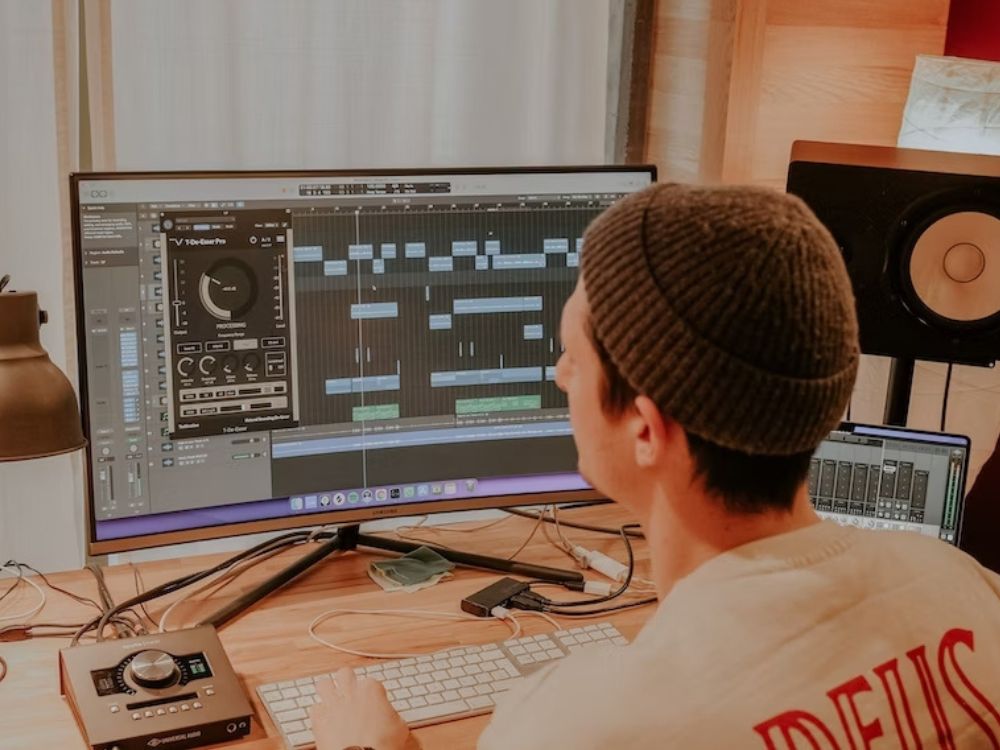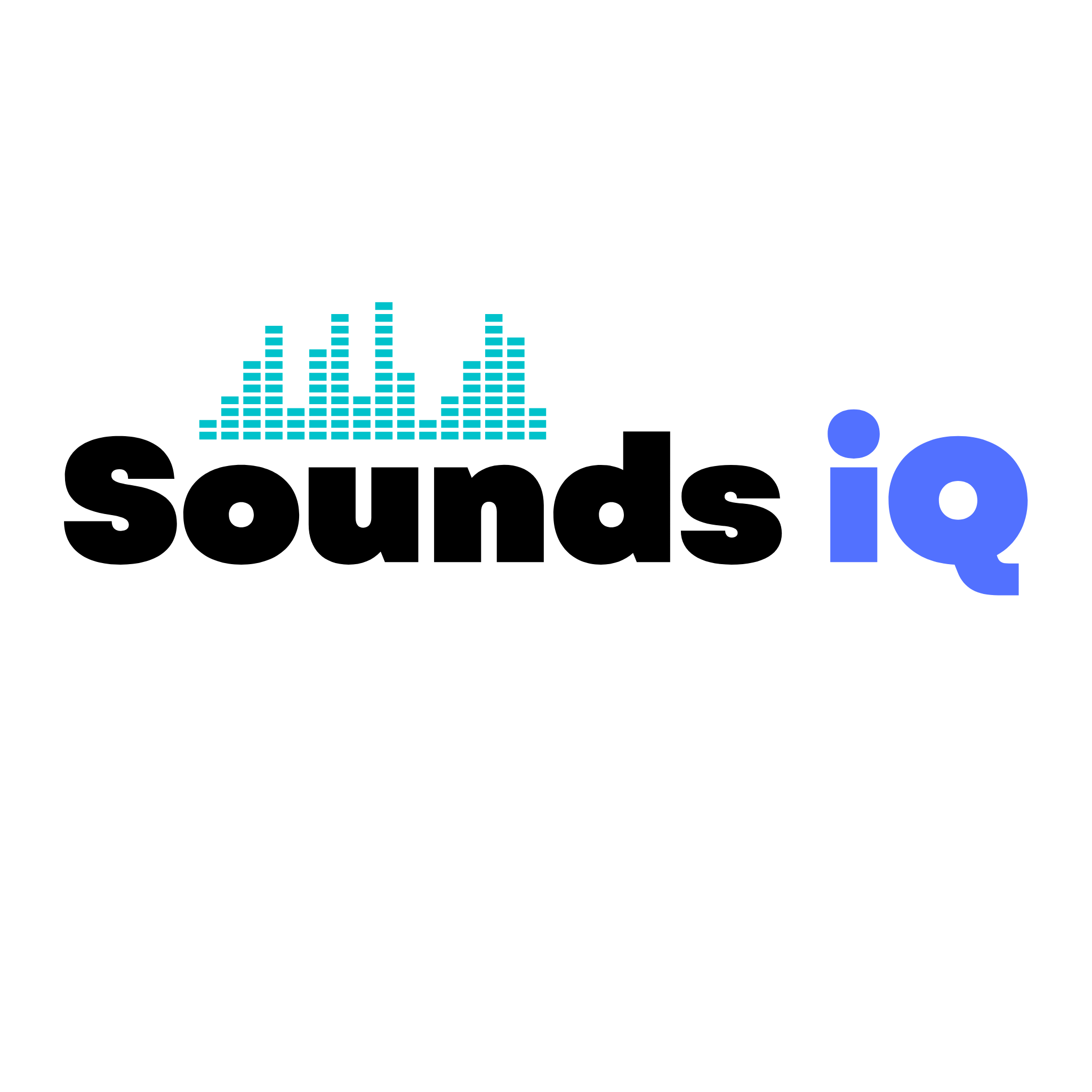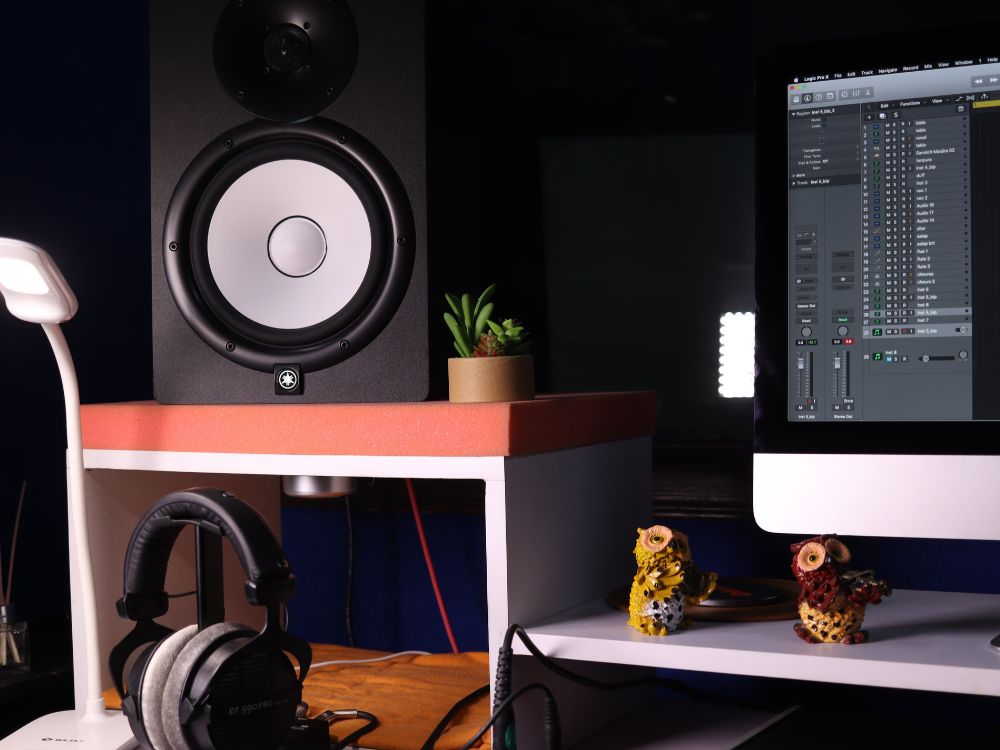Affiliate Disclaimer
As an Amazon Associate, we earn from qualifying purchases.
Picture this: You’re in the recording studio, putting the finishing touches on your latest track. You’ve spent countless hours writing, producing, and mixing, and now you’re ready to hear the final product. You hit play, and the sound fills the room. But as you listen, something doesn’t quite sound right. The bass is too muddy, the vocals are too quiet, and the overall mix just doesn’t have the clarity and definition that you were hoping for, but then now start asking yourself why studio monitors are sold individually. Why did they not sell to me in pairs? Do not worry READ ON
This is a scenario that many music producers have experienced at some point in their careers. It’s frustrating, to say the least, and it can lead to wasted time and lost opportunities. But what if there was a way to ensure that you always heard your music exactly as it was intended to be heard? This is where studio monitors come in.
Studio monitors are a critical component in the music production process, providing a clear and accurate representation of the sound being produced. They are not like regular speakers that you might use for listening to music at home. They are designed to provide a flat frequency response, meaning that they produce sound without coloring or altering it in any way. This is essential for music producers who need to hear the true sound of the music they are working on, without any added bass or treble that might mask important details.
But why are studio monitors sold individually? This is a question that many people have asked, and it’s one that we’ll explore in this article. We’ll dive into the reasons behind this industry practice, and explain why it’s important for music producers to understand. By the end of this article, you’ll have a deeper understanding of why studio monitors are sold individually, and how they can help you take your music production to the next level. So, let’s get started!
Table of Contents
ToggleThe Flexibility Factor: Why Studio Monitors Are Sold Individually
When it comes to producing music in a professional studio setting, having the right equipment is crucial. One of the most important components of any studio setup is the studio monitors. These speakers are designed specifically for audio production and are essential for accurately monitoring the sound being produced.
One question that often comes up when it comes to studio monitors is why they are sold individually, rather than in pairs or sets. The answer, as it turns out, has to do with the flexibility factor. By selling monitors individually, manufacturers are able to offer a wide range of options to suit different needs and preferences.
For example, one music producer might prefer to use a specific model of the monitor for their left channel, while another might prefer a different model for their right channel. By selling monitors individually, producers are able to mix and match different models to create a system that is tailored to their specific needs. This level of customization and flexibility is not possible with pre-packaged pairs of monitors.
The Importance of Customization: Understanding Why Studio Monitors Are Sold Separately
In addition to the flexibility factor, another reason that studio monitors are sold individually is the importance of customization. When it comes to producing music, every producer has unique preferences and needs.
For example, one producer might prefer a more neutral and transparent sound, while another might prefer a monitor that adds a bit of warmth or color to the sound. By selling monitors individually, manufacturers can offer various options to suit different preferences and needs.
Additionally, producers may want to use different types of monitors for different stages of the production process. For example, near-field monitors are typically used for mixing and mastering, while larger monitors may be used for tracking or playback. By selling monitors individually, producers can mix and match different types of monitors to create a setup optimized for their specific workflow.
The Technical Advantage: Why Studio Monitors Are Individually Sold for Accurate Stereo Imaging
Another important reason that studio monitors are sold individually is that it allows for more precise stereo imaging and positioning. In a studio setting, it’s important to have monitors that are placed in the correct position to accurately represent the sound being produced.
By purchasing individual monitors, music producers can experiment with different placements and configurations to achieve optimal results. This level of flexibility is not possible with pre-packaged pairs of monitors.
In addition, individual monitors can be more precisely matched to ensure optimal stereo imaging. When using paired monitors, it can be difficult to ensure that the left and right channels are perfectly matched. By selling monitors individually, manufacturers can ensure that each monitor is precisely matched and compatible with the others in their lineup.
The Cost-Effective Solution: Exploring the Individual Sales of Studio Monitors
While it may seem counterintuitive, purchasing individual studio monitors can be a more cost-effective solution in the long run. Instead of having to replace an entire pair of monitors if one of them breaks, music producers can simply replace the individual monitor that is malfunctioning.
This can save producers a significant amount of money over time, as they don’t have to replace an entire set of monitors every time something goes wrong. Additionally, purchasing individual monitors allows producers to upgrade or replace individual components as needed, rather than having to replace an entire set of monitors.
The Necessity of Precision: Why Studio Monitors are Not Sold in Pairs
Another reason that studio monitor are not sold in pairs is that it can be difficult to ensure optimal precision and accuracy when using paired monitors. Even slight differences in the manufacturing process or components can result in differences between the left and right channels.
In a studio setting, even the slightest discrepancies can have a significant impact on the final product. By selling monitors individually, manufacturers can ensure that each monitor is precisely matched and optimized for accuracy and precision.
Furthermore, selling monitors individually allows for more accurate calibration and fine-tuning. Each monitor can be calibrated and adjusted individually to ensure optimal performance, which is not possible when using pre-packaged pairs of monitors.
The Freedom to Choose: The Benefits of Individually Sold Studio Monitors
In summary, the decision to sell studio monitors individually provides music producers with a greater degree of flexibility, customization, and precision. By allowing producers to mix and match different models, types, and configurations of monitors, manufacturers enable producers to create a studio setup that is tailored to their unique preferences and workflow.
In addition, the ability to purchase individual monitors provides a cost-effective solution for replacing or upgrading components over time. Finally, the precision and accuracy that comes with individually sold monitors ensure that producers can achieve the highest level of quality and precision in their final product.
So while the decision to sell studio monitors individually may seem counterintuitive at first, it is clear that this approach offers numerous benefits for music producers seeking the highest level of quality and precision in their work. By providing the freedom to choose, manufacturers are empowering producers to create their unique sound and achieve their artistic vision.
The Importance of Accurate Monitoring in Music Production
While the benefits of individually sold studio monitors may be clear, it is worth examining the broader context of why accurate monitoring is so important in music production.
At its core, music production is all about achieving the highest possible level of quality and precision in the final product. This requires a keen ear and a deep understanding of how different sonic elements interact with one another. Whether it’s achieving the perfect balance between vocals and instruments, or fine-tuning the EQ settings to create a specific mood or tone, every decision made during the production process can have a significant impact on the final product.
To achieve this level of precision, music producers rely on a variety of tools and techniques, including digital audio workstations, virtual instruments, and, of course, studio monitors. Of these tools, studio monitors are perhaps the most important, as they provide producers with the most direct and accurate representation of the sound they are creating.
However, not all studio monitors are created equal. Some monitors may have a more neutral or flat frequency response, while others may emphasize certain frequencies or have a more colored sound. The type of monitors used can have a significant impact on how the final product sounds, which is why it is so important for producers to choose the right monitors for their specific needs.
The Benefits of Mixing and Matching Studio Monitors
One of the main advantages of individually sold studio monitors is the ability to mix and match different models, types, and configurations of monitors. This allows producers to create a studio setup that is tailored to their unique preferences and workflow.
For example, a producer may choose to use a pair of high-end nearfield monitors for critical listening and mixing, while using a smaller set of monitors for reference or background listening. Alternatively, a producer may choose to use different types of monitors for different stages of the production process, such as using a set of larger monitors for tracking and a set of smaller monitors for mixing.
The ability to mix and match monitors in this way provides producers with a great deal of flexibility and customization. By selecting monitors that are optimized for different tasks, producers can ensure that they are getting the most accurate representation of the sound at each stage of the production process.
Furthermore, mixing and matching monitors can also help to minimize the impact of room acoustics on the final product. Every room has its own unique acoustic properties, which can have a significant impact on how sound is perceived. By using a variety of different monitors that are optimized for different tasks and frequency ranges, producers can minimize the impact of any room anomalies or acoustic issues.
The Importance of Calibration and Fine-Tuning

Another advantage of individually sold studio monitors is the ability to calibrate and fine-tune each monitor individually. This level of precision is simply not possible when using pre-packaged pairs of monitors.
Calibration is the process of adjusting a monitor’s settings to ensure that it is producing sound as accurately and consistently as possible. This may involve adjusting the monitor’s frequency response, phase alignment, or other settings to optimize its performance.
Fine-tuning is the process of making small adjustments to a monitor’s settings to achieve a specific goal, such as emphasizing a particular frequency range or compensating for a specific room issue. This level of precision is essential for achieving the highest level of quality and precision in the final product.
By selling monitors individually, manufacturers enable producers to calibrate and fine-tune each monitor individually to ensure optimal performance. This level of precision and accuracy simply cannot be achieved with pre-packaged pairs of monitors.
Conclusion
It is important to remember that the ultimate goal of music production is to create the best possible final product, and achieving this requires a great deal of precision, skill, and attention to detail. By using individually sold studio monitors, producers can create a studio setup that is optimized for their unique needs and workflow, allowing them to achieve the highest level of quality and precision in their work.
While the initial investment in a set of studio monitors can be significant, the benefits of accurate monitoring are well worth it for serious music producers. By investing in high-quality monitors and taking the time to calibrate and fine-tune them, producers can ensure that their work is truly world-class and that their final products will sound amazing on any system.
In conclusion, while the decision to sell studio monitors individually may seem like a small detail, it is clear that this approach offers numerous benefits for music producers seeking the highest level of quality and precision in their work. By providing the freedom to choose, manufacturers are empowering producers to create the best possible studio setup for their needs, and enabling them to achieve their creative vision with greater accuracy and precision.
Check out to know why studio monitors are expensive
Enhance Your Monitoring Experience: Must-Have Accessories for Studio Monitors
Automate Your Studio Monitor Shutdowns and Save Energy
Reduce Vibrations and Improve Sound Quality
Protect Your Monitors from Vibrations and Enhance Performance
Keep Your Studio Environment Clean and Free of Dust and Allergens
Ensure Accurate and Consistent Sound Across Different Playback Systems






